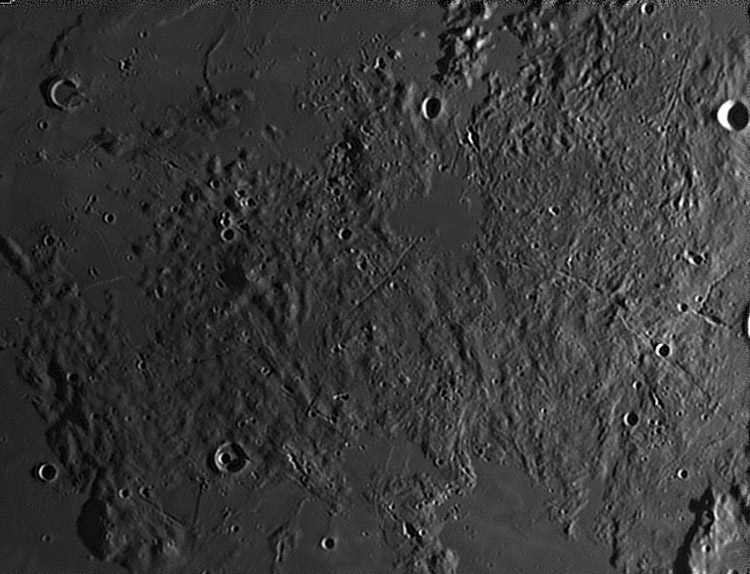March 9, 2012
A Big DMD

image by Israel Tejera Falcón, Vecindario, Las Palmas, Canary Islands, Spain
All people have a history, and so does every piece of the Moon. This landscape clearly has a fractured history, but lacks any dramatic landforms so that is is even difficult to recognize where it is. But we know from its dark hue that it is probably veneered by pyroclastics (dark mantle deposit - DMD), and the rubbly hills suggest that it is ejecta from a basin-forming event. The mare lavas at the top of the image are part of Sinus Aestuum, and the rubbly terrain is ejecta from the formation of the Imbrium Basin. Lisa Gaddis and her pyroclasts-chasing colleagues determined that this DMD deposit is one of the largest on the Moon with an area of about 30,000 sq. km. This central region of the Moon hosts two other major DMDs near Rima Bode and Sulpicius Gallus. The reason for such a concentration of volatile-rich eruptions is unknown to me. New data from the Moon Mineralogy Mapper show that the composition of the Sinus Aestuum deposit differs from the other two nearby. The Aestuum pyroclastics are one of the few places on the Moon that have significant spinel - a magnesium aluminium mineral. Again, the reason for this location for an unusual composition is unknown. Particular rock types don't occur at random - there is a reason the large pyroclastic deposits occur near this central area of the Moon, and why one is different from the others - we just don't understand those reasons. Not yet.
Chuck Wood
Technical Details
2012/03/01 UT:20:43. Celestron CPC XLT 11" + Celestron Ultima x2 barlow + Red Filter + Lumenera Skynyx 2-0M camera.
Vecindario Observatory
Related Links
Rükl plate 32
Yesterday's LPOD: Another One
Tomorrow's LPOD: Plato Plus
COMMENTS?
Register, Log in, and join in the comments.



